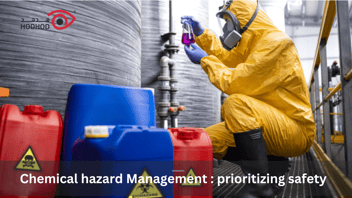Unmasking the challenges of traditional MSDS management
Manufacturers and suppliers of substances or mixtures are responsible for providing an updated MSDS when the product is altered or when new hazard information becomes available.
In the fast-paced realm of industry where the safety stakes are high, the Material Safety Data Sheet (MSDS) has long been a stalwart defender. As we outlined in our previous post, it provides critical information that helps prevent hazardous incidents, guides emergency responses, and shapes safety training programs. But as essential as it is, the traditional MSDS management process isn’t without its challenges.
Accessibility: The Key to Utilization
Arguably one of the most pressing challenges is accessibility. MSDS must be readily available to those who need them - workers on the shop floor, safety managers, emergency responders, and more. However, with the traditional paper-based system, making these documents easily accessible to everyone, at any time, is an uphill battle.
The process of storing and retrieving MSDS becomes a time-consuming task, particularly for large enterprises handling hundreds, if not thousands, of different substances. The larger the company, the more complex the task of ensuring that up-to-date MSDS are properly filed and accessible when needed.
The Race against Time: Keeping MSDS Updated
Another significant issue with traditional MSDS management lies in keeping the data sheets up to date. Manufacturers and suppliers of substances or mixtures are responsible for providing an updated MSDS when the product is altered or when new hazard information becomes available. But tracking these updates and making sure the most current version of an MSDS is on hand is a demanding task. The challenge escalates when dealing with a vast number of substances, as each one requires a separate MSDS.
Lost in Translation: Language Barriers
Multicultural and multinational corporations face another layer of complexity in managing MSDS: language barriers. In today’s globalized industries, a company’s operations can span multiple countries, each with its own language and specific regulations. The MSDS for each substance must be translated accurately to ensure all workers, regardless of their location or primary language, have the necessary safety information. This translation process is not only time-consuming but also opens up potential for errors that can have serious implications for worker safety.
The Cost Factor: Is There a Better Way?
While the MSDS system remains indispensable for maintaining safety in industries dealing with hazardous substances, these challenges can make the traditional process of managing MSDS costly and time-consuming. This inevitably leads to the question: Is there a more efficient way to manage this vital safety tool?
In our next post, we’ll delve into how digital innovations could potentially revolutionize MSDS management and solve these pain points. Stay tuned as we explore the future of MSDS and how it could reshape safety in the industry.


